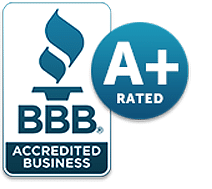Temporary Fencing Panels: An Overview
Last updated Thursday, October 19th, 2023
Introduction
Temporary fencing is utilized in circumstances where permanent fencing is unnecessary or impractical. Temporary fencing is most commonly seen surrounding the perimeter of construction sites, special outdoor events, parking areas, and emergency/disaster relief sites.
Temporary fencing is used when an area needs barriers for the purposes of public safety or security, crowd control, theft deterrent, or equipment storage. The visibility of the fencing often is an important factor in its effectiveness – the higher the visibility, the more likely that the fencing will achieve its goals. Night-reflective fencing, powder-coated in the “caution yellow” color, has proven to be a popular style because of its high visibility.
Efficient temporary fencing will consist of individual panels that can be set up around the perimeter of the desired area to be fenced in. Individual fencing panels can be of varying sizes, but a common height is six feet. Common widths are usually in the 7- to 9-foot range.
Physical Characteristics
High-quality temporary fencing panels will be made of heavy-duty steel, which is galvanized after welding. The most efficient, employee-friendly panels will feature 2-inch by 4-inch welded wire mesh. This style features no sharp edges which could potentially get hung up during loading, unloading, or handling of panels. The rectangular arrangement is also easier on the fingers and hands of the individuals who will be moving the panels. This type of temporary fencing panel is frequently viewed as a preferable alternative to chain link fencing, which often features edges or exposed wire which makes it more difficult to load or handle.
Similarly, fencing panels should be of a weight which makes it relatively easy for one person to lift and set-up the fencing. Leading suppliers currently produce an ideal 37-pound panel. Top-quality panels are constructed to result in a long life-span which can withstand years of abuse in outdoor settings.
The Pallet Advantage
Temporary fencing panels are most efficient when they can be stored and transported via self-contained pallets, which feature a multi-panel capacity. For example, Perimeter Patrol temporary fencing panels are packaged in pallets that hold 28 panels, resulting in 210 linear feet of fencing.
Pallets eliminate the need to handle pallets individually. A pallet is easily loaded by a forklift onto a truck. When the truck arrives at the destination, the driver can then easily unload the fence panels from the pallet. This process takes a fraction of the time it takes to transport fencing panels individually. When fencing panels are packaged and transported in pallets, hundreds of feet of fencing can be loaded and unloaded in minutes. Pallets also save space on the truck and in storage.
Loading, Unloading, and Set-Up
Pallets are placed onto flatbed or pick-up trucks via forklift. In a standard pallet, the fencing panels will remain firmly in place because of the pallet’s cross-bars. Pallets also feature a removable hardware basket containing the fence panel components (bases, clamps, bolts, etc.). At their destination, fence panels are easily removed from the pallet.
At that point, the set up of the fencing is also easy enough to be handled by one person. One needs only to take the bases from the hardware basket and place them on the ground around the perimeter of the area. The panels are easy to set in place on the bases. One base accommodates two panels, so the entire fence is interlocked. Additionally, panel clamps secure the top of panels to each other.
Colors
When fencing panels are in color, they attractively secure designated areas in a highly-visible manner. The “caution yellow” color is the general standard because of its proven visibility. White is the next most popular color, but custom colors including black, blue, and red are also generally available.
Accessories/Components
A number of accessories and components are generally available with temporary fencing. Here are the most common:
* No-climb extension panels: These “extra” panels add height – usually and extra foot – to the top of the fence. They can be installed vertically or at a 45-degree angle.
* Base tie-downs and base weights: These extra components are used to provide additional stability to a temporary fencing set-up.
* Swing gate wheels: In lieu of a base, a swing gate wheel can be inserted to the bottom of a fence panel “leg.” This will enable the panel to roll inward or outward.
* Ground anchors: Anchors also provide additional support to keep a panel from moving. The three most popular anchoring systems options are spike ground rod, cable ground anchor, or cable drive rod.
Summary
Temporary fencing panels are an economical, efficient way to secure areas such as construction sites or outdoor events. Industry-standard panels can be handled by one person, resulting in easy loading, unloading, and set-up. When this product is available in self-contained pallets, transport and unloading of over 200 feet of fencing can be accomplished in minutes.


